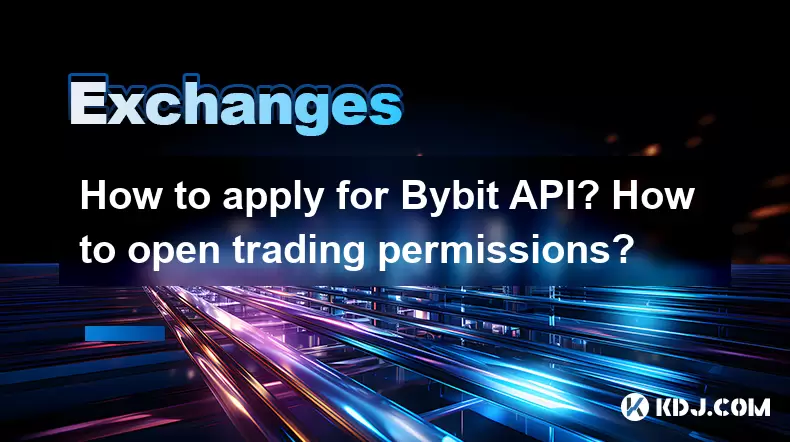-
 Bitcoin
Bitcoin $117500
2.15% -
 Ethereum
Ethereum $3911
6.19% -
 XRP
XRP $3.316
10.79% -
 Tether USDt
Tether USDt $1.000
0.01% -
 BNB
BNB $787.2
2.24% -
 Solana
Solana $175.2
4.15% -
 USDC
USDC $0.9999
0.00% -
 Dogecoin
Dogecoin $0.2225
8.40% -
 TRON
TRON $0.3383
0.28% -
 Cardano
Cardano $0.7868
6.02% -
 Stellar
Stellar $0.4382
9.34% -
 Hyperliquid
Hyperliquid $40.92
7.56% -
 Sui
Sui $3.764
7.63% -
 Chainlink
Chainlink $18.48
10.66% -
 Bitcoin Cash
Bitcoin Cash $582.1
1.88% -
 Hedera
Hedera $0.2601
6.30% -
 Avalanche
Avalanche $23.33
4.94% -
 Ethena USDe
Ethena USDe $1.001
0.02% -
 Litecoin
Litecoin $122.3
2.04% -
 UNUS SED LEO
UNUS SED LEO $8.969
-0.27% -
 Toncoin
Toncoin $3.339
0.86% -
 Shiba Inu
Shiba Inu $0.00001287
4.30% -
 Uniswap
Uniswap $10.43
7.38% -
 Polkadot
Polkadot $3.861
5.08% -
 Dai
Dai $1.000
0.02% -
 Bitget Token
Bitget Token $4.513
3.41% -
 Monero
Monero $267.7
-6.18% -
 Cronos
Cronos $0.1499
4.14% -
 Pepe
Pepe $0.00001110
5.15% -
 Aave
Aave $284.9
8.28%
How to apply for Bybit API? How to open trading permissions?
To automate trading on Bybit, users must apply for an API key and enable trading permissions for specific pairs, ensuring secure and efficient trading integration.
May 18, 2025 at 11:56 pm

Applying for a Bybit API and opening trading permissions are crucial steps for users who wish to automate their trading strategies or integrate with third-party applications. This guide will walk you through the detailed process of applying for a Bybit API and opening trading permissions, ensuring that you can navigate through the steps with ease and confidence.
Understanding Bybit API
Bybit API is a set of protocols and tools that allow users to interact with Bybit's trading platform programmatically. This means you can automate trading, retrieve real-time market data, and manage your account without manually navigating the Bybit website or app. The API is essential for traders who use algorithmic trading or wish to integrate Bybit with other software solutions.
Prerequisites for Applying for Bybit API
Before you can apply for the Bybit API, you need to ensure that you have a Bybit account. If you don't have one, you will need to register first. Here are the steps to create a Bybit account:
- Visit the Bybit website and click on the "Sign Up" button.
- Enter your email address and create a strong password.
- Complete the email verification process by clicking on the link sent to your email.
- After verifying your email, you will need to complete the KYC (Know Your Customer) process, which involves submitting identification documents.
Once your account is set up and verified, you can proceed to apply for the Bybit API.
Applying for Bybit API
To apply for the Bybit API, follow these steps:
- Log into your Bybit account.
- Navigate to the "API Management" section, which can be found under the "Account" or "Settings" tab.
- Click on "Create New API Key."
- You will be prompted to enter a label for your API key, which helps you identify the key's purpose.
- Choose the permissions you want to grant to the API key. Common permissions include reading account information, placing orders, and withdrawing funds.
- After selecting the permissions, you will need to enter a 2FA (Two-Factor Authentication) code to proceed.
- Once you submit the request, Bybit will generate an API key and a secret key. Make sure to save these keys securely, as you will not be able to view the secret key again after closing the page.
Opening Trading Permissions
After obtaining your Bybit API key, you will need to ensure that your account has the necessary trading permissions. Here's how you can open trading permissions:
- Log into your Bybit account.
- Go to the "Trading" section of the platform.
- Select the specific trading pair for which you want to enable trading.
- Click on the "Enable Trading" button next to the trading pair.
- You may be asked to confirm your decision and enter a 2FA code to proceed.
Once you have enabled trading for the desired pairs, your account will have the necessary permissions to execute trades through the API.
Verifying API and Trading Permissions
After setting up your API key and enabling trading permissions, it's important to verify that everything is working correctly. Here’s how you can do that:
- Use a tool like Postman or a programming language like Python to send a request to Bybit’s API endpoint to check your account balance or place a test order.
- If you can successfully retrieve your account information or place an order, it means your API key is functioning correctly and you have the necessary trading permissions.
Managing API Keys
It's important to manage your API keys properly to ensure the security of your account. Here are some best practices:
- Regularly review your API keys and revoke any that are no longer in use.
- Use different API keys for different applications to limit the impact if one key is compromised.
- Never share your API secret key with anyone or store it in an insecure location.
Troubleshooting Common Issues
Sometimes, you might encounter issues while setting up your Bybit API or enabling trading permissions. Here are some common problems and their solutions:
- API Key Not Working: Ensure that you are using the correct API key and secret key. Also, check if the API key has the necessary permissions.
- Trading Permissions Not Enabled: Double-check that you have enabled trading for the specific trading pair you are trying to use.
- 2FA Issues: If you are having trouble with 2FA, ensure that your authenticator app is synchronized correctly and that you are entering the correct code.
Frequently Asked Questions
Q: Can I use the same API key for multiple trading accounts?
A: No, each API key is tied to a specific Bybit account and cannot be used across multiple accounts. You will need to generate a separate API key for each account you wish to use with the API.
Q: What should I do if I lose my API secret key?
A: If you lose your API secret key, you will need to create a new API key. Go to the "API Management" section of your Bybit account and revoke the old key before generating a new one. Remember to update any applications or scripts that were using the old key.
Q: How often should I rotate my API keys?
A: It is a good practice to rotate your API keys periodically, such as every few months, to enhance security. Regularly reviewing and updating your keys can help protect your account from potential security breaches.
Q: Can I enable trading permissions for all trading pairs at once?
A: No, you need to enable trading permissions for each trading pair individually. This is a security measure to ensure that you have control over which assets you can trade.
Disclaimer:info@kdj.com
The information provided is not trading advice. kdj.com does not assume any responsibility for any investments made based on the information provided in this article. Cryptocurrencies are highly volatile and it is highly recommended that you invest with caution after thorough research!
If you believe that the content used on this website infringes your copyright, please contact us immediately (info@kdj.com) and we will delete it promptly.
- SNEK, Cardano, and the Contributor's Conundrum: A Meme Coin's Fight for Recognition
- 2025-08-08 16:30:12
- Toshi Crypto's Wild Ride: Rally, Demand Slump, and What's Next
- 2025-08-08 16:30:12
- Ethereum, Staking Yields, and DeFi Exposure: A New Era for Investors?
- 2025-08-08 15:10:12
- Unilabs Pumps MIA, Binance Coin Bouncing Back, and Ethereum's Bearish Blues
- 2025-08-08 15:10:12
- Ethereum's Wyckoff Markup and Market Rotation: A New Era?
- 2025-08-08 15:30:12
- Ethereum, Vitalik Buterin, and the Overleveraged Game: A Balancing Act
- 2025-08-08 15:30:12
Related knowledge

How to use margin trading on Poloniex
Aug 08,2025 at 09:50am
Understanding Margin Trading on Poloniex

How to use advanced trading on Gemini
Aug 08,2025 at 04:07am
Understanding Advanced Trading on GeminiAdvanced trading on Gemini refers to a suite of tools and order types designed for experienced traders who wan...

How to deposit USD on Bitstamp
Aug 07,2025 at 05:18pm
Understanding Bitstamp and USD DepositsBitstamp is one of the longest-standing cryptocurrency exchanges in the industry, offering users the ability to...

How to use the Kraken Pro interface
Aug 08,2025 at 09:57am
Understanding the Kraken Pro Interface LayoutThe Kraken Pro interface is designed for both novice and experienced traders seeking a streamlined experi...

How to find my transaction ID on Gemini
Aug 08,2025 at 12:50am
Understanding the Transaction ID in Cryptocurrency ExchangesA transaction ID (TXID) is a unique alphanumeric string that identifies a specific transfe...

How to calculate crypto taxes from Binance
Aug 08,2025 at 07:56am
Understanding Cryptocurrency Taxation on BinanceCalculating crypto taxes from Binance requires a clear understanding of how tax authorities classify d...

How to use margin trading on Poloniex
Aug 08,2025 at 09:50am
Understanding Margin Trading on Poloniex

How to use advanced trading on Gemini
Aug 08,2025 at 04:07am
Understanding Advanced Trading on GeminiAdvanced trading on Gemini refers to a suite of tools and order types designed for experienced traders who wan...

How to deposit USD on Bitstamp
Aug 07,2025 at 05:18pm
Understanding Bitstamp and USD DepositsBitstamp is one of the longest-standing cryptocurrency exchanges in the industry, offering users the ability to...

How to use the Kraken Pro interface
Aug 08,2025 at 09:57am
Understanding the Kraken Pro Interface LayoutThe Kraken Pro interface is designed for both novice and experienced traders seeking a streamlined experi...

How to find my transaction ID on Gemini
Aug 08,2025 at 12:50am
Understanding the Transaction ID in Cryptocurrency ExchangesA transaction ID (TXID) is a unique alphanumeric string that identifies a specific transfe...

How to calculate crypto taxes from Binance
Aug 08,2025 at 07:56am
Understanding Cryptocurrency Taxation on BinanceCalculating crypto taxes from Binance requires a clear understanding of how tax authorities classify d...
See all articles

























































































